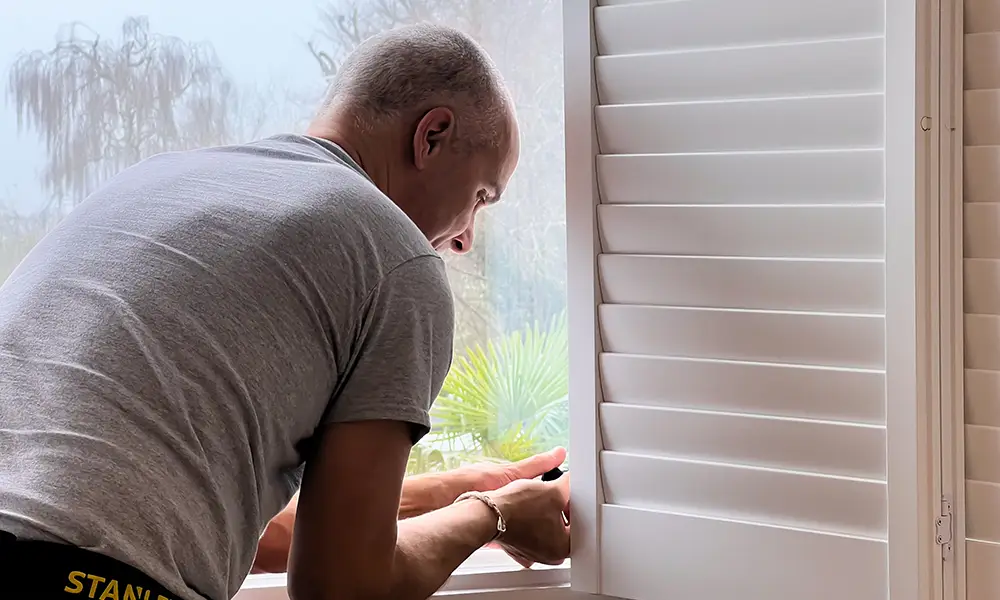Shutters up or down for light? You’d think plantation shutters would be relatively straightforward. From the outside, they look simple and easy to operate, but there are a lot of choices to make behind the scenes. Today we’d like to demonstrate when and why you would tilt your shutters louvres closed with illustrated by pictures of shutter installations completed by The Shutter Studio over the past years.
Shutters up?

shutters up for complete privacy
The first thing to note is that the louvres tilted ‘upwards’ is considered the closed position, as demonstrated in the above photo of our fitter, Mark installing these full-height panels. When shutters have a tilt rod, you can see the closed position by the nodules cut into the panel at the top, where the tilt rod is supposed to sit when closed.
Some shutters will also come with a nodule at the bottom for the tilt rod to sit when closed, but most of the time only the closed position is given. Shutters are most effective at blocking out light in this position as they will fit together with a gentle click and redirect any remaining light from outside toward the ceiling, rather than into your room.
Shutters down?

shutters down for light control
In the above picture, the slats are tilted downwards in the bottom section- a position that would usually be considered open. This positioning directs sunlight into the room rather than towards the ceiling and is better for bringing light into the room. In this open position, you’ll find the louvres don’t sit tightly against each other; blocking out less light during the day and night. Tilting the shutters all the way down is a good position to leave your shutters in if you’d prefer not to adjust them with the light. This will bring light into the room at all times, but mitigate the effects of the glaring midday sun.
Just in the middle?
On the other hand, with the louvres tilting up slightly, anyone looking into the home would only see the slats. This reflects light into the top of the room but does provide more privacy. Leaving your shutters in this half-closed position will provide more privacy but also light into your home, and, we find, makes the room warmer. This is because warm air rising in the room is less likely to become trapped behind the shutters and more likely to circulate through the room. For the best of both worlds, tier-on-tier shutters are fantastic as they allow you to close the bottom shutters for privacy and keep the top shutters open for light.
We hope this answers your question of “do you put shutters up or down?” as we want you to get the maximum use out of your shutters to benefit from their beautiful qualities. Unfortunately, the tradeoff between light and privacy is something that you have to balance for yourself. But if you want to maximise the light coming into the room without opening the louvres completely, tilt the shutters downwards to bring as much light into the room as possible. You may even find that directing the light in this way, especially with white shutters, brings more light into the room than before.
Book your free consultation today. Click here.
For inspiration, you can also keep up to date with our latest news by following us on Instagram, X and Facebook.

